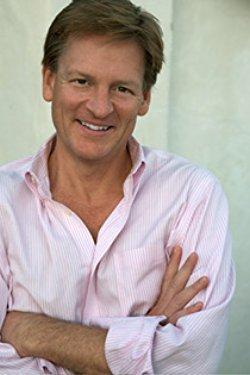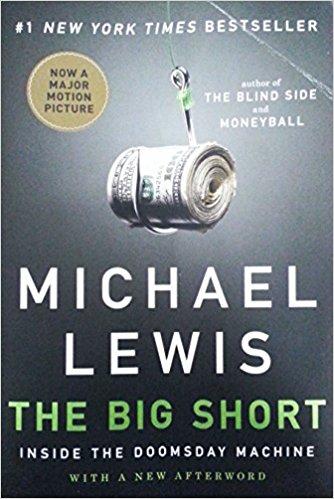The Big Short Summary
<1 min read ⌚
 Inside the Doomsday Machine
Inside the Doomsday Machine
If you were wondering how the terrible 2008 financial crisis happened, read Michael Lewis’s story of Wall Street and the “too big to fail” companies which created it.
In our summary, we are giving you a taste of what you can expect in “The Big Short.”
Who Should Read “The Big Short”? And Why?
In “The Big Short” Michael Lewis offers portrays smart and very ambitious people, who by becoming obsessed with money entered a situation out of the reach of their understanding.
He also portrays a handful of people who understood exactly what was going on but couldn’t believe what they were witnessing.
We recommend “The Big Short” to traders, journalists, historians, bankers, and prosecutors.
About Michael Lewis
 Michael Lewis is a bestselling author who has also written for The New York Times, Vanity Fair and Slate.
Michael Lewis is a bestselling author who has also written for The New York Times, Vanity Fair and Slate.
“The Big Short Summary”
By 2005, the subprime mortgage bond industry made almost a trillion dollars every year in issuance.
A significant part of the subprime bond business was built thanks to ordinary and poor people who just got from one loan to another without any possibility of repaying.
However, it was in Wall Street’s knowledge that housing costs would rise continually in case the mortgagors could not bear the cost of the inescapable.
In this situation, the moneylender bore no hazard since property values were going up and would keep going up indefinitely.
Boardroom strategists chose to create as many credits as could be expected under the circumstances and afterward bolster them to the big speculation banks, which would transform them into securities.
At the point when the bonds were in question, the corporate group trusted it knew all the more intriguing approaches to benefit from losses.
To comprehend how events unfurled, envision the way of life of the focused, shrouded security market.
Ever since the 1980s, Wall Street’s bond business had been the top moneymaker, overshadowing equity trading.
Bonds, after all, are much more liquid than stocks and are unregulated.
The vast majority of people do not comprehend them, and when subprime mortgage bonds turned into a bonanza in the mid-2000s, their complexity just added to their appeal.
The doomsday machine was an endless contraption filled with greed, obliviousness, and dread.
It was comprised of modern financial instruments, including collateralized debt obligations (CDOs) and credit default swaps, created by quants at firms like Goldman Sachs to pull in good evaluations from the rating organizations.
Insiders utilized complexity (and the appearance of it) to veil risk and boost return.
These instruments were all subordinate in nature. As a result, they were contracts amongst purchasers and merchants based on mortgage-backed bonds’ costs.
This doomsday machine was intended to drain each drop of equity from the property market, and, when that was done, to make its own elective fuel: engineered CDOs.
This machine opposed control, comprehension, and mankind itself.
At last, in its abnormal brilliance, it satisfied its motivation: It empowered individuals to undermine or evade the fiscal framework, see the open doors in cataclysm and wager on that result.
The tricky nature of the doomsday machine is on its tail.
Catastrophe needs time to spread out and mortgages need time to fall flat.
Some won enormous sums from their wagers.
Wing Chau’s CDO administration business slammed, yet he made millions.
Hubler set a record for cash lost by a Wall Street broker, yet he, as well, left the scene with millions in his pockets.
This sends a lesson that poor choices bear no outcomes.
After the crisis calmed, instant revisionist history recommended that it had all been a “crisis in confidence” and that no bank had required government help.
In a more reasonable view, the 2008 fiscal emergency was related to 1980s strategies and practices on the production of early CDOs.
It was a side-effect of the pattern which a few organizations shared, and used to recast themselves from partnerships to public corporations, where money financial outcomes fall on investors, not on inside leaders.
These companies never again incited investors’ and brokers’ previous feeling of moral obligation.
In a broader, more crude sense, the emergency was conceived of the influence of greed among bankers, as well as among speculators.
Key Lessons from “The Big Short”
1. Who Was Accountable for the Financial Implosion that Destroyed Wall Street in 2008?
2. The Unfolding of the Crisis
3. The Doomsday Machine
Who Was Accountable for the Financial Implosion that Destroyed Wall Street in 2008?
- CEOs who did not comprehend what was happening in their security offices.
- Security brokers who did not grasp their business or the instruments they were offering.
- Rating offices that controlled information to their advantage.
- Mortgage loan practices which were intended to enroll as many borrowers as they could, paying little heed to their creditworthiness.
The Unfolding of the Crisis
- The balloon installment comes
- Foreclosure arrives
- Foreclosure is trailed by insolvency and a forced sale.
The effect on the bond is that of a moderate infection.
So when the crisis hit, that was a start, not an end.
The Doomsday Machine
The doomsday machine was an endless contraption filled with greed, obliviousness, and dread.
It was comprised of modern financial instruments, including collateralized debt obligations (CDOs) and credit default swaps, created by quants at firms like Goldman Sachs to pull in good evaluations from the rating organizations.
Like this summary? We’d Like to invite you to download our free 12 min app, for more amazing summaries and audiobooks.
“The Big Short” Quotes
Even as late as the summer of 2006, as home prices began to fall, it took a certain kind of person to see the ugly facts and react to them. Share on X There was effectively no way for an accountant assigned to audit a giant Wall Street firm to figure out whether it was making money or losing money. Share on X Greed on Wall Street was a given – almost an obligation. The problem was the system of incentives that channeled the greed. Share on X There were more morons than crooks, but the crooks were higher up. Share on X ...For Wall Street it was a machine that turned lead into gold. Share on XOur Critical Review
“The Big Short” contrary to what you may expect, is not a chronological text that follows the unfolding of the crisis. It is rather a portrait of the handful of people who managed to use the crisis to gain riches and enters information about the crisis as a connecting tissue.
Although you may not feel that the book’s structure is its strongest point, Lewis is a writer who knows how to write compelling stories.
So, even though “The Big Short” is not the book you expect it to be – you will certainly enjoy reading it.
Emir is the Head of Marketing at 12min. In his spare time, he loves to meditate and play soccer.


 Inside the Doomsday Machine
Inside the Doomsday Machine




